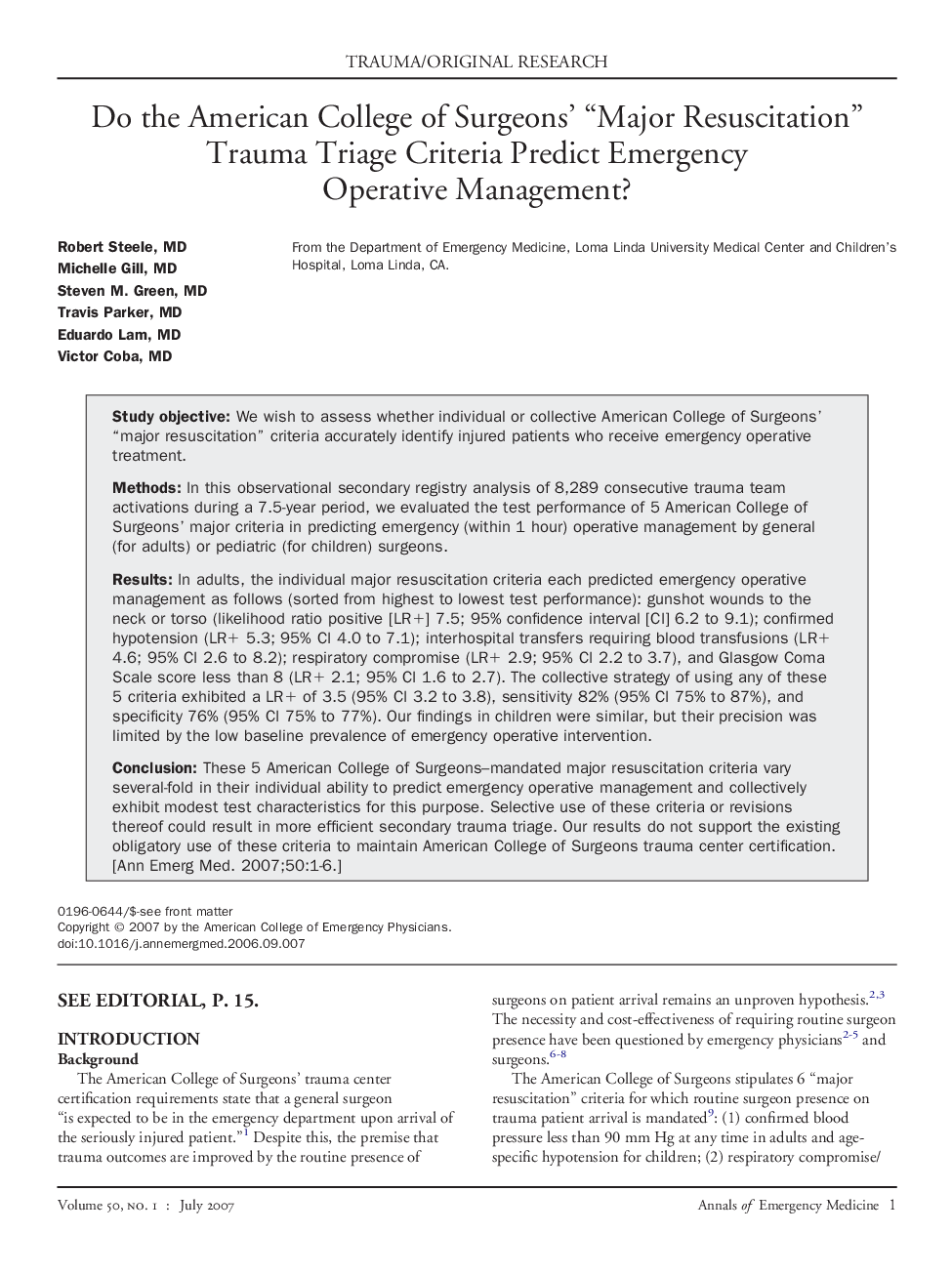| Article ID | Journal | Published Year | Pages | File Type |
|---|---|---|---|---|
| 3233945 | Annals of Emergency Medicine | 2007 | 6 Pages |
Study objectiveWe wish to assess whether individual or collective American College of Surgeons’ “major resuscitation” criteria accurately identify injured patients who receive emergency operative treatment.MethodsIn this observational secondary registry analysis of 8,289 consecutive trauma team activations during a 7.5-year period, we evaluated the test performance of 5 American College of Surgeons’ major criteria in predicting emergency (within 1 hour) operative management by general (for adults) or pediatric (for children) surgeons.ResultsIn adults, the individual major resuscitation criteria each predicted emergency operative management as follows (sorted from highest to lowest test performance): gunshot wounds to the neck or torso (likelihood ratio positive [LR+] 7.5; 95% confidence interval [CI] 6.2 to 9.1); confirmed hypotension (LR+ 5.3; 95% CI 4.0 to 7.1); interhospital transfers requiring blood transfusions (LR+ 4.6; 95% CI 2.6 to 8.2); respiratory compromise (LR+ 2.9; 95% CI 2.2 to 3.7), and Glasgow Coma Scale score less than 8 (LR+ 2.1; 95% CI 1.6 to 2.7). The collective strategy of using any of these 5 criteria exhibited a LR+ of 3.5 (95% CI 3.2 to 3.8), sensitivity 82% (95% CI 75% to 87%), and specificity 76% (95% CI 75% to 77%). Our findings in children were similar, but their precision was limited by the low baseline prevalence of emergency operative intervention.ConclusionThese 5 American College of Surgeons–mandated major resuscitation criteria vary several-fold in their individual ability to predict emergency operative management and collectively exhibit modest test characteristics for this purpose. Selective use of these criteria or revisions thereof could result in more efficient secondary trauma triage. Our results do not support the existing obligatory use of these criteria to maintain American College of Surgeons trauma center certification.
